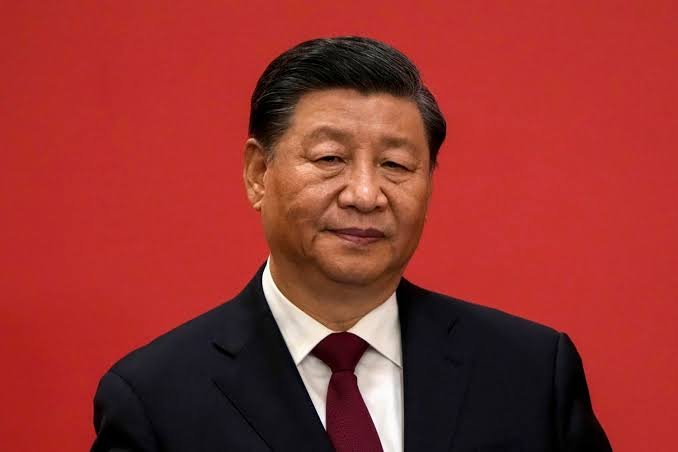Celebrating 75 Years of Diplomatic Relations
China and India marked the 75th anniversary of their diplomatic relations with a mutual exchange of congratulatory messages between their leaders, emphasizing the need for strengthened cooperation, increased strategic trust, and sustained border peace. Chinese President Xi Jinping, in his message, highlighted the importance of what he called the “Dragon-Elephant Tango,” a metaphor symbolizing the need for the two Asian giants to work in harmony despite their differences.
Indian Prime Minister Narendra Modi echoed similar sentiments, underscoring the historical and cultural ties that bind the two nations and stressing the potential for mutual growth through diplomatic and economic collaboration. Both leaders reaffirmed their commitment to following the direction set during their recent discussions at the BRICS Summit in Kazan, Russia, where they pledged to enhance cooperation on various fronts.
Historical Context and the Evolution of Relations
India was among the first nations to recognize the People’s Republic of China in 1950, establishing formal diplomatic ties on April 1 of that year. The early phase of their relationship was marked by optimism, captured in the slogan “Hindi-Chini Bhai Bhai” (India and China are brothers). However, the 1962 border war cast a shadow over their ties, leading to decades of mistrust and competition.
Despite these challenges, China and India have made multiple efforts over the years to mend ties through diplomatic talks, economic cooperation, and cultural exchanges. Both nations, being among the world’s largest economies and fastest-growing markets, recognize the strategic importance of maintaining a stable and cooperative relationship.
Commitment to Peace and Stability
A major component of the renewed commitment to stronger ties is the emphasis on maintaining border stability. The longstanding disputes along the Line of Actual Control (LAC) have been a point of tension between the two nations. In the aftermath of past border clashes, both sides have engaged in multiple rounds of negotiations aimed at de-escalation and confidence-building measures.
The Kazan meeting between President Xi and Prime Minister Modi set the stage for a framework where both nations agreed to prevent further confrontations, improve communication between their military and diplomatic officials, and work towards a long-term resolution of boundary disputes. These steps are expected to create a more stable environment, reducing risks of unintended conflicts that could derail broader cooperation.
Strengthening Economic and Trade Relations
China and India are two of the world’s largest economies, and their economic interdependence remains a crucial pillar of their relationship. Despite past tensions, China remains India’s largest trading partner, with bilateral trade surpassing $135 billion in recent years. However, India has expressed concerns over the widening trade deficit with China and has been pushing for better market access for Indian goods and services.
Both nations have acknowledged the need for a more balanced trade partnership. Steps are being taken to boost Indian exports to China, particularly in sectors such as pharmaceuticals, information technology, and agriculture. Additionally, investment from Chinese enterprises in India’s manufacturing and infrastructure sectors continues to be a key area of discussion, as both sides recognize the economic benefits of deeper collaboration.
Cultural and People-to-People Exchanges
Cultural exchanges have long been a bridge between the two nations. The resumption of the Kailash Mansarovar Yatra, a revered pilgrimage route for Indian devotees in Tibet, has been seen as a goodwill gesture by China. Such initiatives not only strengthen diplomatic relations but also foster mutual understanding and respect among the citizens of both countries.
Academic and student exchanges have also increased, with a growing number of Indian students pursuing higher education in Chinese universities. Joint initiatives in research, technology, and innovation are being explored as both nations look to leverage their strengths in science and technology for mutual benefit.
Collaboration on Global Issues
As two major players in the Global South, China and India share common interests in shaping global economic and geopolitical frameworks. Their active participation in multilateral organizations like BRICS, the Shanghai Cooperation Organization (SCO), and the G20 reflects their intent to collaborate on issues such as climate change, sustainable development, and global trade reforms.
Despite their differences on some international issues, both countries have found common ground in advocating for the interests of emerging economies, pushing for reforms in international financial institutions, and working together on global health initiatives.
Challenges and the Road Ahead
While the progress in Sino-Indian relations is promising, challenges remain. Political differences, border tensions, and economic competition have historically complicated their relationship. However, both nations recognize that cooperation is far more beneficial than conflict.
Foreign policy experts believe that a pragmatic approach—one that focuses on areas of convergence while managing differences through dialogue—will be key to sustaining positive momentum. The commitment to peaceful negotiations and economic collaboration, as reiterated by both leaders, offers a hopeful path forward.
Conclusion
The 75th anniversary of diplomatic relations between China and India is a moment to reflect on the past and envision a future of cooperation and mutual growth. The concept of the “Dragon-Elephant Tango” encapsulates the idea that, despite their unique national identities and interests, China and India can coexist and thrive together.
By prioritizing dialogue, economic partnership, cultural exchanges, and strategic trust, both nations can set an example for peaceful coexistence and cooperation in an increasingly complex world. The coming years will test the strength of this commitment, but the reaffirmed willingness to work together marks a significant step towards a more stable and prosperous relationship.
Xi Jinping Xi Jinping Xi Jinping Xi Jinping Xi Jinping Xi Jinping Xi Jinping Xi Jinping
For the latest news and breaking updates, follow Sejal News Network
“Exciting news! Sejal News Network is now on WhatsApp Channels
Subscribe today by clicking the link and stay updated with the latest news!” Click Here


